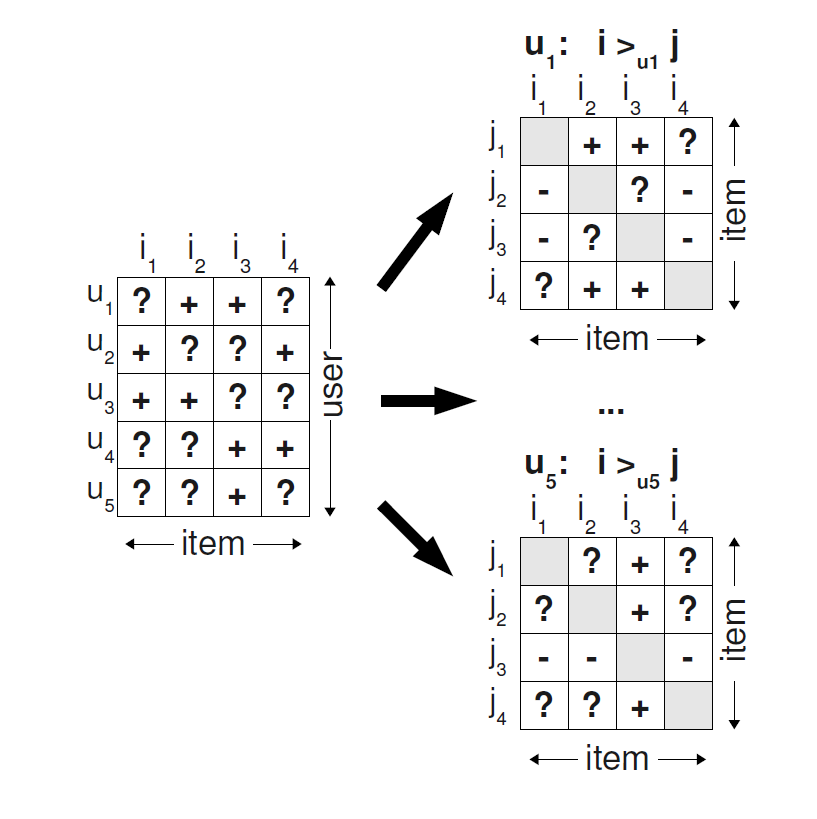BPR¶
Introduction¶
Title: BPR Bayesian Personalized Ranking from Implicit Feedback
Authors: Steffen Rendle, Christoph Freudenthaler, Zeno Gantner and Lars Schmidt-Thieme
Abstract: Item recommendation is the task of predicting a personalized ranking on a set of items (e.g. websites, movies, products). In this paper, we investigate the most common scenario with implicit feedback (e.g. clicks, purchases). There are many methods for item recommendation from implicit feedback like matrix factorization (MF) or adaptive knearest-neighbor (kNN). Even though these methods are designed for the item prediction task of personalized ranking, none of them is directly optimized for ranking. In this paper we present a generic optimization criterion BPR-Opt for personalized ranking that is the maximum posterior estimator derived from a Bayesian analysis of the problem. We also provide a generic learning algorithm for optimizing models with respect to BPR-Opt. The learning method is based on stochastic gradient descent with bootstrap sampling. We show how to apply our method to two state-of-the-art recommender models: matrix factorization and adaptive kNN. Our experiments indicate that for the task of personalized ranking our optimization method outperforms the standard learning techniques for MF and kNN. The results show the importance of optimizing models for the right criterion.

Running with RecBole¶
Model Hyper-Parameters:
embedding_size (int): The embedding size of users and items. Defaults to64.
A Running Example:
Write the following code to a python file, such as run.py
from recbole.quick_start import run_recbole
run_recbole(model='BPR', dataset='ml-100k')
And then:
python run.py
Tuning Hyper Parameters¶
If you want to use HyperTuning to tune hyper parameters of this model, you can copy the following settings and name it as hyper.test.
learning_rate choice [0.01,0.005,0.001,0.0005,0.0001]
Note that we just provide these hyper parameter ranges for reference only, and we can not guarantee that they are the optimal range of this model.
Then, with the source code of RecBole (you can download it from GitHub), you can run the run_hyper.py to tuning:
python run_hyper.py --model=[model_name] --dataset=[dataset_name] --config_files=[config_files_path] --params_file=hyper.test
For more details about Parameter Tuning, refer to Parameter Tuning.
If you want to change parameters, dataset or evaluation settings, take a look at